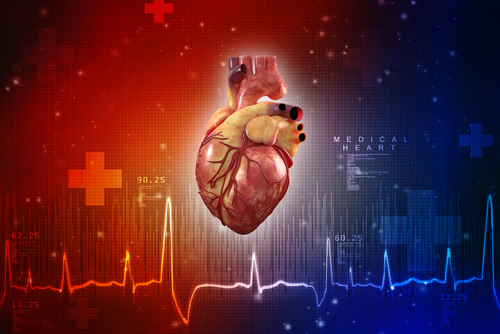Fabry Disease and the Heart

Fabry disease leads to heart complications in more than 50% of patients. Here is more information about these complications and how doctors diagnose and treat them.
Heart problems in Fabry disease
Patients with Fabry disease may experience a number of cardiac problems. The most frequent is left ventricular hypertrophy, which is an enlargement of the muscles of the left side of the heart that pumps blood to the rest of the body.
Other complications include heart failure, irregular heartbeat, problems with the function of heart valves, and conduction abnormalities (problems in the way electrical signals move through the heart).
Cardiac issues may cause a number of other symptoms including shortness of breath, chest pain, a pounding or fluttering heart, and fainting.
How Fabry disease causes cardiac problems
Fabry disease is caused by a genetic mutation in the GLA gene. This gene contains the information necessary for cells to make the alpha-galactosidase A enzyme. This enzyme normally functions to break down large fat molecules called globotriaosylceramide (Gb3).
The dysfunction of the alpha-galactosidase A enzyme leads to a buildup of Gb3 inside cells, including cardiac cells. Researchers think this may lead to the activation of pathways that cause cells to die and cardiac tissue to enlarge or turn into scar tissue, all of which can impair normal cardiac function.
Diagnosing heart problems in Fabry disease
Doctors can use a number of different tests to look for assorted cardiac complications in Fabry disease.
Electrocardiograms (ECG or EKG) monitor the electrical signals of the heart and can indicate problems with the movement of electrical signals through the heart that could lead to arrhythmias. Doctors also may perform ECG while a patient is exercising because some conduction issues may not show up unless the heart rate is high.
Echocardiograms use sound waves to monitor the movement of the heart valves, chambers, and blood flow to look for any abnormalities.
Magnetic resonance imaging can show any structural changes to the heart, such as enlargement of the left ventricle.
Computed tomography scans can help detect any areas where the blood does not reach the heart muscle. Doctors sometimes use this technique with exercise in what is called a nuclear stress test.
High levels of certain biomarkers in the blood also can be indicators of certain cardiac problems.
Treatment options
There are a few treatments available for the underlying cause of Fabry disease that can slow or prevent the progression of cardiac complications.
Enzyme replacement therapies (ERT) such as Fabrazyme or Replagal can reduce levels of Gb3 in heart tissue and reduce the size of the left ventricle. In patients in the early stages of tissue damage, ERT also may improve cardiac function.
The oral medication migalastat (Galafold) may reduce the size of the left ventricle.
Angiotensin-converting enzyme (ACE) inhibitors may help reduce left ventricular hypertrophy.
Beta-adrenergic blockers or beta-blockers may treat arrhythmias.
Doctors may prescribe anticoagulants to prevent blood clots that could lead to a heart attack or stroke.
For severe arrhythmias, doctors may implant a pacemaker or defibrillator device. In severe cases, patients may need a heart transplant.
Last updated: Jan. 8, 2021
***
Fabry Disease News is strictly a news and information website about the disease. It does not provide medical advice, diagnosis or treatment. This content is not intended to be a substitute for professional medical advice, diagnosis, or treatment. Always seek the advice of your physician or other qualified health provider with any questions you may have regarding a medical condition. Never disregard professional medical advice or delay in seeking it because of something you have read on this website.






